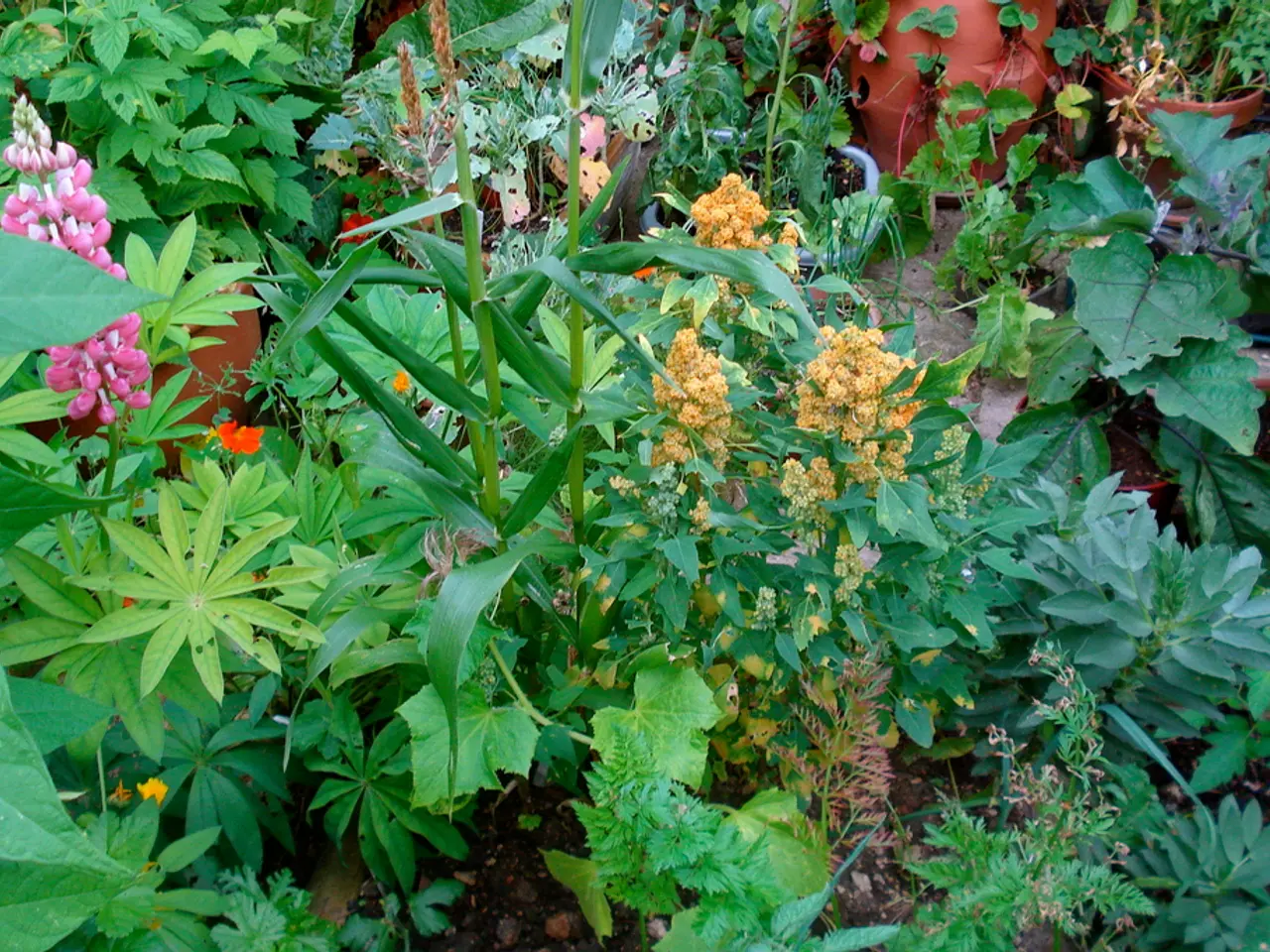Effortless Guide to Container Gardening: Essential Information for Thriving Potted Plants
Container gardening is a versatile and accessible way to grow plants, suitable for gardeners with poor soil, beginners, or those dealing with pests like moles. With the right container, soil, and plants, you can create a thriving garden in small spaces such as balconies, patios, or even fire escapes.
Choosing the Right Container
Selecting the right container is the first step to successful container gardening. Containers should have good drainage, ideally with at least half-inch wide drainage holes, and be large enough to accommodate the mature root structure of the plants being grown. Terra cotta, plastic, wooden boxes, or repurposed items like buckets can all be used, but they must provide adequate drainage. For most vegetables, containers should be at least 12–14 inches in diameter and deep enough (around 40 cm or more) to accommodate root growth [1][2][3].
Selecting or Preparing Appropriate Soil
A high-quality potting mix designed for container gardening is essential. This mix typically includes components like coconut coir or peat moss (retains water), perlite or vermiculite (improves aeration), and nutrient-rich compost. Avoid using garden soil or topsoil as they are too heavy for containers. Homemade mixes can be made from equal parts compost, peat moss/coco coir, and perlite/vermiculite, with added balanced organic fertilizer to replenish nutrients [1][2].
For some plants, such as Mediterranean plants or acid-loving plants like azaleas or blueberries, the potting soil may need to be adjusted. More sand may be added for Mediterranean plants, while an ericaceous blend is suitable for acid-loving plants [4].
Companion Planting and Plant Grouping
Planting vegetables with similar water and light requirements together in the same container can simplify care. Companion planting considerations can also improve growth and pest control. If planting multiple crops in one large container, ensure there is enough space for all roots [1][2].
Planning Container Placement and Watering
Arrange containers in zones or areas that provide adequate sunlight (typically 6-8 hours for most vegetables). Use self-watering containers or reservoirs if possible to help maintain consistent moisture. Check drainage and water levels regularly to prevent root rot [3][5].
Adding Structural Supports and Labeling Plants
For plants that grow tall or need support (like tomatoes or fennel), add stakes or cages early to avoid damage later. Label plants with tags or signs for easy identification and maintenance [4].
Overwintering and Winter Container Gardening
Overwintering is important for perennial plants like hydrangeas, rosemary, and herbs like lavender, thyme, and chives. If you live in a zone colder than the plant can tolerate, you'll need to overwinter it indoors as a houseplant, taking it back outside the following spring. Container gardening in winter is nothing to be afraid of, as long as you consider hardiness zones [6].
Fertilizing and Watering
Fertilize container plants regularly to replace nutrients that leach out quickly as you water frequently. Reduce watering when the weather is wetter to avoid waterlogging and potential fungal issues [7].
Sources: [1], [2], [3], [4], [5], [6], [7].
With these steps in mind, you're ready to embark on your container gardening journey. Happy gardening!
[1]: Container Vegetable Gardening: A Beginner's Guide [2]: Container Gardening for Beginners: Tips and Tricks [3]: Container Gardening: Tips for Success [4]: Potting Mixes for Container Gardening [5]: Watering Container Plants: How Often and How Much? [6]: Overwintering Container Plants: A Guide [7]: Fertilizing Container Plants: How Often and What Type?
- To create a thriving home-and-garden atmosphere in smaller spaces, you can consider expanding your lifestyle to include container gardening, using proper containers with good drainage and appropriate soil for various plants.
- Incorporating container gardening into your lifestyle, especially in home-and-garden areas with limited space, can allow you to grow a diverse collection of plants, even Mediterranean or acid-loving ones, with the right container and soil selection.




